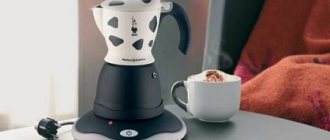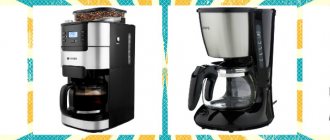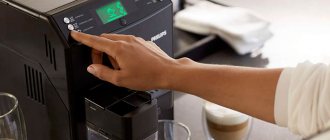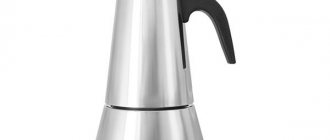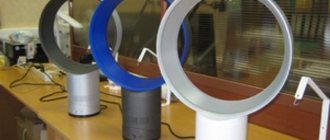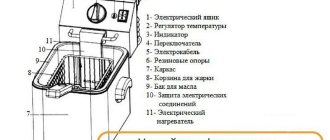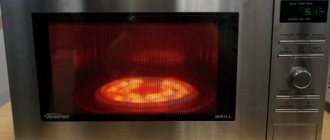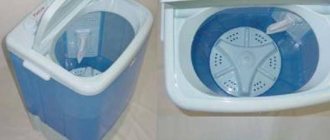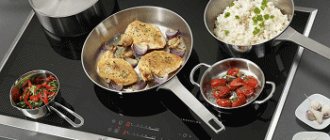Most coffee lovers around the world claim that espresso machines offer more authentic, rich and creamy coffee. An espresso machine also allows you to choose different types of coffee depending on your mood, taste or desired strength.
In comparison, coffee makers are a single function machine and will certainly produce one type of weaker coffee. If you are a coffee lover, you will almost certainly prefer the end product delivered by an espresso machine.
carob coffee maker
In the Russian-speaking environment, the classification is not the same. If in the English-speaking environment machines are divided into coffee makers (coffee makers) and espresso machines (espresso machines), then in the Russian-speaking environment: into coffee makers and espresso coffee makers (coffee machines).
It is believed that a coffee machine has one main feature - grinding and brewing coffee in one cycle. Meanwhile, so-called carob coffee makers, at least a few of them, have a built-in coffee grinder and they brew espresso.
In this article we will talk about carob-type coffee makers. They can be divided into two categories: amateur (home) and professional coffee makers for use in coffee establishments and catering establishments.
Carob coffee makers have almost the same structure. They can vary in functionality, power, quality and price.
The operating principle of the most popular and largest class of coffee making devices is simple: ground coffee is placed in a reservoir called a horn and compacted with a tamper in the form of a coffee tablet. Water converted into steam passes through it under high pressure and flows down in the form of a strong, high-quality finished drink.
Carob coffee makers are available for both coffee beginners and professionals who want to make espresso.
Pump carob coffee maker
A pump creates pressure in them . Preparing espresso requires a pressure of 9 bar. Many manufacturers indicate a pressure of up to 15 bar and this should be understood as the pressure at the water outlet from the pump. And when water enters the horn, the pressure drops to 7-9 bar.
Pumps are vibrating and rotary . If a special piston (piston) oscillates and creates pressure, such a pump is called vibrating . That is, the pump piston moves water in different directions. The pressure generated by the oscillatory movement is discrete, that is, uneven. Therefore, this type of pump is cheap and compact.
Industrial (professional) coffee makers are equipped with rotary pumps . In them, a motor rotates the scooping and pushing water along the hydrological path, the impeller at a constant speed. Such pumps create stable and uniform pressure. They are expensive and big. Professional carob coffee makers in coffee shops and restaurants with rotary pumps are therefore significantly large devices.
For entry-level and mid-level coffee makers, a vibration pump is largely sufficient and it has a disproportionately small effect on the finished drink and its quality. This type of pump is found in cheap and expensive coffee makers.
In a coffee maker, water is heated to the desired brewing temperature (95-98 degrees) using a boiler , thermoblock thermostat heating system .
There are products that can operate at higher temperatures than 98 degrees. This heating system is needed for frothed milk after brewing coffee. These coffee makers have an additional heating system for hot water and steam.
More about the device
Ground coffee is placed inside the coffee grinder, then the composition is pressed into tablets. Hot water flows under pressure through the coffee. It's like cooking easily and in an instant.
Pump and pressure
The pressure in the carob coffee maker is built up due to the operation of the pump. For classic types of espresso coffee, 8-9 bar is enough. Manufacturers often talk about 15 bars or more, including in the low segment of devices with horns. But this has nothing to do with improving the quality of coffee preparation. In any case, the pressure reaches 7-9 bar by the time the water reaches the horn to make coffee.
Pumpless, boiler-type carob coffee grinders should be eliminated immediately. They heat the water and feed it into the horn naturally, without increasing the pressure. The existing indicators are clearly not enough to prepare high-quality espresso coffee.
Carob coffee grinders of almost any variety are equipped with a vibration pump:
- Entry level for making coffee.
- Average level.
- Household varieties of coffee makers with horns.
But the pump of a carob coffee grinder also has one drawback - the unevenness of the indicator, its decrease at the same moment when the piston moves. But this problem is not the most serious. This means that the carob machine will work stably under any conditions while preparing coffee.
If there are no problems or serious breakdowns, under normal circumstances the vibration pumps of devices with horns perform their functions well. It has a minimal effect on the finished drinks and their quality, especially when compared with other technical solutions and compromises. The device is found both in the cheapest devices and in more expensive ones. How a carob-type coffee maker works is easy to understand.
A rotary pump is a device without which it is impossible to imagine an industrial, professional class of devices with horns. It is equipped with an electric motor. It maintains a stable, constant speed by turning the water supply mechanism. The result will be a stable pressure level for preparing coffee. Only the dimensions of the coffee maker are increasing, as is the price.
There are models of carob coffee makers in which the water pressure can only be adjusted manually. A special lever is used. This gives maximum control over the process, but the devices require certain skills when preparing coffee. The principle of operation is a little more complicated.
Water heating process
The water heating device is another important component in any carob coffee maker. After pressure, fluid temperature is the next important parameter to consider. The quality of espresso coffee depends not least on this.
It’s good if you can keep this indicator stable, close to ideal. Then no one doubts the quality of the drink. The lack of necessary qualities in coffee is most often due to the fact that the device with the horn was unable to produce water at the required temperature.
The following devices are responsible for the function of heating water for coffee:
- Flow-through thermoblock.
- Storage boiler of small or large volume.
- Boiler with heat exchanger.
The first type of device for coffee makers with a horn is more often found inside entry-class models; its volume is set at just over 100 ml. In advanced models of coffee makers, the volume will already be from 200 to 400 ml, or they have boilers with heat exchangers. Description and features are individual for each coffee maker model.
Each of the solutions mentioned above has both negative and positive aspects.
- In the case of thermoblocks, no preheating is necessary. Hot water is supplied immediately, there are practically no restrictions on volume. But the temperature cannot be maintained at the same level; changes are possible.
- The most compact ones are boilers with a small volume. They supply water with the required parameters, but even after preparing one serving of coffee they require “reheating”.
- In the case of large volumes, the problems present with previous devices are easily solved. It just takes more time to initially achieve the desired temperature.
- Heat exchangers.
Steam coffee maker
Pumpless (steam, boiler) carob coffee makers heat and supply water to the carob naturally. Their pressure does not exceed 4 bar, which is not enough to make espresso.
With low pressure, while the coffee maker is loading, the steam will have time to overheat and the coffee powder will lose its pleasant aroma.
There are no devices that increase pressure in steam coffee makers. On the contrary, a metal boiler with a water heating element is installed. The resulting steam forces water into the cone containing the coffee tablet.
Thus, steam horn coffee makers brew something similar to filter coffee, not espresso.
In an internal boiler, in a sealed tank, water is brought to a boil in a matter of minutes. Such overheated water, passing through ground coffee, produces a drink that is bitter or sour. Coffee is prepared within 2 minutes. Due to the fact that the steam will quickly absorb the beneficial properties of ground coffee, the caffeine content of the drink will be higher than from a pump device. However, the aroma of the drink will not be too strong.
Options for pump and steam models for ground coffee
If we talk about the types of carob coffee makers, there are only 2 main ones:
- steam;
- pump action
Carob-type pump coffee maker - model Redmond RСM-1503
Pump devices provide for the fact that water, which is under pressure, passes through ground coffee, thereby brewing it. The pressure in such machines can vary from 5 to 15 bar, and the power from 1000 to 1700 W. A huge disadvantage of this type of coffee maker is that one cup will take about 30 minutes to prepare, but at the same time it can prepare 6-7 cups of espresso.
This option may be suitable for home or office, but only if you don’t need a cup of natural coffee right away and you can wait. A huge advantage, compared to steam coffee, is that such coffee is richer and tastier.
Steam coffee maker
A steam coffee maker has almost 3 times less pressure and a power of no more than 1000 W. The temperature at which the drink is prepared will be slightly higher, not 95°C, but 100°C. In such a machine, a cup of espresso will be prepared in a few minutes, but it will contain much more caffeine than in the previous version. This coffee will perfectly invigorate you in the morning, but in general, it has a negative effect on human health, and especially on the heart. Therefore, it is better not to get carried away with such drinks.
In order to figure out which device is better to buy, decide for yourself what is more important: vigor or unique taste.
Carob lever coffee makers
This is a purely professional subclass of carob coffee makers, where the pressure is achieved and adjusted manually using a special mechanical lever. The quality of coffee depends on the skills of the barista and he works with a pump.
Coffee maker water reservoir. For ease of maintenance, coffee makers are made with a removable reservoir.
Carob coffee makers have additional features such as a removable tray, the ability to use coffee in pods, a double nozzle, an automatic coffee dispenser, and an auto shut-off.
How is water heated?
The quality of espresso depends on such basic parameters as water pressure and temperature. Therefore, a carob coffee maker has another important element - a water heating device. Stable and ideal temperature gives the best drink.
To heat water, use a thermoblock, boilers of different sizes, or a boiler containing a heat exchanger. In 80% of cases, Italian ULKA/CEME is used. A flow-through thermoblock or a small boiler (more than 100 ml) is installed in entry-level coffee makers. Expensive options are equipped with a large boiler (from 200 to 400 ml) or a boiler with a heat exchanger.
A preheated thermoblock immediately supplies hot water in any volume. However, they can create temperature differences.
A small boiler supplies a small volume of water at the required temperature, but requires reheating.
A large volume boiler supplies a large volume of water at the required temperature without additional heating. But it takes longer to initially heat up.
There is a coil in the heat exchanger chamber. Water passing through a system of tubes is heated to a stable temperature. However, initial heating takes a long time. The water, initially heated and superheated in the heat exchanger to too high a temperature, is then drained by performing a “idle flow” into the pan.
Coffee makers are also produced with two boilers, the steam from one of them is used to froth milk, and the second is used to make espresso.
Brewing group and coffee maker horn
The brewing group contains a horn , filter and additional elements to improve the quality of coffee. The actual coffee extraction process takes place in the group.
The coffee maker's horn is a handle with a filter holder for a coffee tablet. It is made of metal or plastic. Metal horns are preferred. Cheaper horns use plastic.
The diameter of the horns is 50, 54, 57, 58 mm. Professional classic diameter - 58 mm. For coffee makers with a horn diameter of 58 mm, the easiest way is to purchase higher-class portafilters and filters for every taste. Cheaper coffee makers are often equipped with horns of 50 or 54 mm diameter.
A portafilter or basket, simply a filter, is a key element in the brew group.
A simple filter means that the coffee flows without any additional equipment or steps. The filter is a regular fine mesh. Such a filter will require barista qualifications.
A coffee maker intended for the masses has filters with “improvers” . Such coffee makers are divided according to the presence and type of “improver”. This is a structural element responsible for bringing the pressure in the brewing group to parameters close to the reference ones. It may either be absent or be in the form of a double bottom or valve system. A sign of a professional class is the absence of an “improver”.
Then there are more opportunities for manual participation in the process to obtain potentially maximum results. However, this requires skill in selecting the grind and tamping the coffee tablet.
Filters with “improvers” are either a filter that has a double bottom (one bottom has many holes, the second has one hole), or multi-layer mesh filters , or these are spring filters that serve coffee at a certain pressure in the horn.
The valve system is more efficient, but requires more complex maintenance. The double bottom basket is easier to clean and contains no plastic. But with a valve system the result is better. These are different systems that correct errors and improve the taste of espresso.
By automating the process, they prevent user errors. However, while reducing intervention, the improver does not produce the excellent espresso obtained with manual operation.
The improver and filter are included with the coffee maker, you buy them together and you will not be able to exchange them for another one.
It is recommended to choose portafilters without plastic and without rubber seals. Also, a filter with a double bottom creates difficulties when cleaning finely ground coffee. Filters need to be cleaned regularly.
Electronic components of coffee makers with a coffee horn
Espresso coffee makers have only two electronic components: an automatic dosing system and a PID controller .
Using the automatic dispenser, you can adjust the amount of water that the coffee maker dispenses in one start. As a rule, a coffee maker can brew single and double volume espresso. You can change the volume of water up or down to adjust the mode to a certain degree of coffee grinding.
An electronic boiler temperature control device (otherwise known as PID) stabilizes the temperature of the spilled water. This device is found in professional coffee makers and middle-class devices. You will have to pay extra for the PID system.
Carob coffee makers also have a three-way valve , they are also called a solenoid. This element helps relieve pressure in the brew group immediately after the water supply has stopped. That is, the drops from the horn stop, the coffee tablet becomes drier. This in turn makes the filter cleaning process easier. Coffee makers equipped with a solenoid are considered middle class and more expensive.
There are also carob coffee makers on the market that dispense heated milk. A special container is provided for milk; such a machine will automatically prepare coffee with milk, such as latte and cappuccino. Automatic cappuccino makers simplify the process of preparing drinks with milk.
Criteria for choosing a household carob coffee maker
Today, choosing a carob-type home coffee maker is complicated by a huge assortment of models that amaze consumers with their diversity. Let’s consider the main criteria that will help you choose a device that best suits the buyer’s needs:
- container for water. Tanks may differ in volume and material of manufacture. The volume determines the number of possible initial servings of the drink - the larger the water container, the more coffee you can brew without refilling. In most cases, this criterion does not have a significant impact on the choice of coffee maker, since a huge tank in an espresso machine intended for personal needs is simply unnecessary. On average, the tank volume can start from 0.2 liters and end with 1.5 liters of water. It is important to note that to prepare one serving of espresso, up to 40 milliliters of water is required, and if you use the device to brew two mugs of the drink at the same time, the device does not use more than 80 milliliters of liquid. The material of the tank is much more important: like all other elements, it can be made of plastic or metal. Plastic ones are more practical and much more common than stainless steel tanks. Plastic can also be different. When purchasing a coffee maker, inspect the tank and pay attention to the smell. In cheap models, the water tank often frankly stinks of plastic; these aromatic properties will subsequently be transferred to every prepared drink;
The water reservoir for carob coffee makers is built-in and is most often made of plastic. - pressure. When choosing an espresso machine, you don’t have to pay attention to what kind of pump is in the machine. Much more important is the pressure achieved by the supercharger. You should not buy machines that prepare coffee at a pressure of 2-4 bar - these devices will not allow you to brew a “real” drink. A normal coffee maker should have a pump; most often this element is of Italian origin and produced by Ulka or Ceme. Vibrating pumps produce at least 8-9 bar - this is the optimal pressure for brewing high-quality espresso. You should not succumb to advertising and overpay for devices that increase pressure to 19 bar; the system will still lower it during the preparation of the drink;
- a heating element. The type of heating element may be a parameter for choosing a specific model. There are several options for heating water in a coffee maker: flow-through thermoblock, small storage boiler, large boiler. In domestic conditions, a large boiler is not required - this is a sign of high-class coffee makers related to professional installations, where there is a need to prepare a large amount of coffee in a small unit of time. The flow-through heating system allows you to supply hot water in large volumes, since the liquid will heat up as it passes through the thermoblock. As for the disadvantages, the water stream will have a different temperature, differing by several degrees, since these heating systems cannot heat the water evenly. The boiler copes better with the task of uniform heating, but problems may arise with constant heating of water if you need to prepare several servings of coffee. If an espresso machine is purchased for a large family where coffee is held in high esteem, you should pay attention to a large-capacity boiler;
- horns (you can also find the name “portafilter” or “holder”). The horns can be equipped with a pressure valve, which opens to release the drink into the mug at a pressure of 9 bar. In this case, a higher quality product is obtained, regardless of how well the ground coffee was compacted. In portafilters without a valve, the coffee comes out immediately after passing through the dry mixture. In this situation, it is important to form a dense tablet by pressing the raw materials. The holder can have an outlet for one mug, two mugs, or have no bottom at all. In the latter case, the coffee drink will flow beautifully from the mesh bottom of the filter - this has its advantages, but making good espresso will require special skills in forming a perfectly smooth coffee tablet. The material of the horn should be taken into account - the holders can be made of metal or plastic. Metal, most often brass, looks more impressive and has greater wear resistance. Plastic is a cheaper option and is prone to cracks and chips. Also, holders can vary in diameter (50–58 millimeters, where 58 is the standard) and structure, for example, the position and thickness of the locking ears. All these parameters do not affect the quality of coffee, but they do affect the ease of selecting a new portafilter if the previous one fails. The handle of the horn can also be made of different materials: plastic, rubber-treated metal, wood. The choice of material for the handle of the holder is a private matter of taste and tactile sensations;
The horn affects the quality of coffee no less than other elements. - cappuccino maker The cappuccino machine is a tube extending from the body of the espresso machine, which is designed to froth milk. Steam passes through the tube, which turns milk fats into dense foam. A cappuccino maker is an opportunity to prepare not only espresso, but also other types of coffee drinks, such as latte or cappuccino. It can be made of plastic or stainless steel. Plastic systems are less durable, steel systems have more advantages (ease of operation, appearance), but the price of such coffee makers is higher;
- controller. The coffee maker can be controlled using a manual or electronic system. In the first case, the controllers will look like buttons or knobs that will need to be pressed to start and stop the coffee maker. The electronic system is characterized by touch buttons, the ability to program modes, and automatic termination of operation after preparing a portion or a specified number of servings of coffee. Advanced models have the ability to control the device from a smartphone, there are functions for delayed preparation of a drink, a choice of strength or volume of coffee;
- design. The appearance of the coffee maker does not affect the quality of coffee preparation, but is an important criterion for choosing a device. The appearance of the appliance should be chosen according to the overall concept of the kitchen. Espresso machines can have a steel color, black, white and others, while being made of plastic or metal. Particularly attractive are solid metal devices with a chrome finish, which fit perfectly into the design of any kitchen, reminiscent of professional machines that can be found in coffee shops or restaurants.
Advantages and disadvantages of carob coffee makers
pros
- Ease of control
- Great functionality and ergonomics
- Reliable and durable housing
- Possibility of preparing delicious coffee with thick foam
- Equipped with a cappuccino maker of many models
- Clean in use
- The ability to preserve the natural taste of the variety
- Economy
- Possibility to create a stable foam
- Can brew a drink instantly
- Cook several servings at once
- There is no need to monitor the cooking process
Minuses
- quite high cost
- limited choice of coffee
- mandatory descaling
- active human participation in the cooking process
- skill requirement for compacting ground coffee in a cone
- the need for a tamper to compact the powder
- lack of built-in coffee grinder
- large dimensions
Review of popular models
A good carob coffee maker is not a cheap pleasure, and in order not to regret spending money, you should approach the choice responsibly. Information about models with the highest ratings from buyers according to Yandex.Market data will help you decide in favor of one model or another.
Table: main characteristics of the TOP 5 carob coffee makers
| Model | Power | Water tank volume | Maximum pressure | Possibility of making cappuccino | Additional functions | Average price (Russian rubles) |
| De'Longhi EC 820 B | 1450 W | 1 l | 15 bar | There is a cappuccino maker, manual | Simultaneous preparation of two cups of coffee, auto shut-off when not in use, cup heating, water level and power indicator. | 14000 |
| Kitfort KT-702 | 1100 W | 1 l | 10 bar | There is a cappuccino maker, manual | Pressure gauge, simultaneous preparation of two cups of coffee, removable drip tray, water level and power indicator. | 4500 |
| Smeg ECF01 | 1350 W | 1 l | 15 bar | There is a cappuccino maker, manual | Adjustment of water hardness, simultaneous preparation of two cups, heating of dishes, indication of water level and switching on. | 33000 |
| VITEK VT-1516 | 1470 W | 1.65 l | 15 bar | Automatic cappuccino preparation | Adjustment of water portion, simultaneous preparation of two cups, indication of water level and switching on. | 9000 |
| ENDEVER Costa-1050 | 900 W | 0.2 l | 5 bar | There is a cappuccino maker, manual | Power indicator, drip tray. | 2000 |
Photo gallery: popular models of carob coffee makers
The De'Longhi EC 820 B coffee maker allows you to brew two cups of coffee at the same time, delivering a maximum pressure of 15 bar
The model from Kitfort with a mechanical pressure gauge has an unusual retro design, but in terms of functionality it does not lag behind more expensive models
The Smeg ECF01 coffee machine is available in different body colors and allows you to prepare high-quality coffee by supplying water under high pressure
The VITEK VT-1516 carob coffee maker model has a built-in milk container, which allows you to prepare cappuccino automatically
ENDEVER Costa-1050 is a simple coffee maker designed to prepare one cup of coffee or cappuccino manually
Customer Reviews
Video: demonstration of the Kitfort KT-702
Carob coffee makers care
Most carob coffee makers do not have an automatic cleaning system, so you must take care of the device yourself. You must remember to wash the coffee maker after each use every day.
Quite often it is necessary to clean the coffee horn from coffee oils. For these purposes, special tablets for coffee fats are produced. To do this, place the tablet in the horn and turn on the water flow on the coffee maker. As soon as water starts dripping, you need to turn off the coffee maker. After a pause of 10-15 minutes, the procedure must be repeated several more times. Thus, you need to pass 2-3 liters of water to remove any remaining product and deposits.
The class of coffee makers for home has hundreds of different models. The choice should not be based on specific brands and models, but on design platforms.
How to brew coffee in an espresso maker
A carob coffee maker is not a fully automatic coffee machine and involves manual operation. You do the grinding of beans (buying ground coffee), putting coffee in the filter, installing the horn, starting (stopping), and cleaning yourself.
After switching on, the carob coffee maker requires warming up; it is necessary to pour hot water over the group and the carob, and warm up the boiler so that the water is at a uniform temperature.
You will also need a separate burr grinder, these are discussed in another article.
It is also necessary to develop and refine your skills in compacting coffee tablets using your home coffee maker. To do this, you need to purchase a filter with a single bottom for the device, that is, without any kind of improver. Such filters are included with even the simplest coffee makers with a horn with a diameter of 50 mm.
When using filters without an improver, skill in forming a coffee tablet and selecting the correct grind are the most necessary conditions. The coffee tablet itself is responsible for pumping up the required pressure in the brewing chamber and the quality of the drink.
When using a filter with an improver, the correct formation of the coffee tablet loses its importance. But the correct grinding matters in any case.
Fresh grinding to the correct degree on a burr grinder makes a big difference.
With filters without an enhancer, the art of brewing the best espresso is put to the test.
After connecting to the network, it is advisable to warm up the coffee maker for several minutes, then empty the filter horn without coffee and warm it up again.
Pour espresso only after the ready indicator flashes.
If you own a coffee maker with a small storage boiler, limit the supply to a single dose of 60 ml. Only after a few minutes of heating, pour the next portion. For coffee makers with a thermoblock, this requirement does not matter.
The process of brewing espresso on a carob home coffee maker is greatly simplified by using pods .
Characteristics of entry-level pump carob coffee maker options for 2021:
Middle class - a boiler with a volume increased to 200-400 ml, a horn without plastic elements of increased diameter with filters without improvers, with additional modules such as a three-way valve and/or PID controller, etc. Without a burr grinder, using such a technique makes no sense.
The best carob coffee makers come with a variety of features. You can adjust the temperature, foam density, amount of milk and water.
The nuances of brewing coffee
Carob coffee makers of any type cannot be classified as conventional coffee machines; there are differences. This involves manual preparation of drinks. You need to buy ground coffee or grind the beans yourself, then place everything in the filter, install the horn, and start the feed. Then all that remains is to throw away the used cake and rinse the equipment.
Obtaining results involves performing a few simple steps after turning on the coffee makers.
- Warm up.
- The entire group, the horn, is poured with high-temperature water.
- Wait a few minutes for the boiler to warm up.
Otherwise, temperature uniformity cannot be guaranteed.
A separate burr coffee grinder is necessary for those who choose mid-range devices. This is more important than just choosing the right class.
Freshness of grinding and roasting is important for any coffee.
In second place among other indicators is grinding, which was correctly chosen depending on a particular type of grain. In the case of pseudo-burr and rotary devices, it basically does not meet current standards.
If some time has passed and the owner is already accustomed to selecting grains and using the coffee grinder correctly, you can take a closer look at more advanced equipment. It is better to practice a little more on the old model, and then purchase a new one.
Even when using simple filters without additional functions, the most important thing of all conditions is to form the tablet correctly and select the grind. It is the tablet that is directly related to the creation of the required level of pressure in the chamber.
You can give additional advice to those who want to get better results.
- It is better to choose fresher grains. Grinding must also meet this requirement.
- With a burr grinder, the correct grind is very important.
- The same applies to the correct tamping of a coffee tablet, for which a metal tamper is used.
- After switching on, it is recommended to warm up the device for several minutes. Then pour the horn and filter without coffee and repeat the warming up procedure.
- Espresso coffee is poured only when the indicator lights up indicating the drink is ready.
- There is always a limit for storage type boilers; this is 60 ml for a one-time drink supply. The next portions of coffee are served after a few minutes of warming up. Coffee makers with thermoblocks make this requirement less relevant.
How to choose a carob coffee maker
The taste and speed of cooking depend, firstly, on the material. In a steel horn, the drink will heat up faster and more evenly.
The packaging is also important. Carob coffee machines have water reservoirs from 0.2 to 2 liters. The larger the container, the higher the fluid pressure.
For delicate milk froth you need a coffee maker with a cappuccino maker. It can be automatic or manual. In the second case, you will need a special tube with a nozzle, which is lowered into the milk.
If fast loading is important to you, choose a device with pods . These are filter bags made of two-layer perforated paper. This packaging improves the taste.
What to look for?
In the selection process before purchasing a coffee maker, it is recommended to pay attention to the following characteristics:
power - ranges from 250 to 2500 W, the speed of coffee preparation depends on the power;
heater type - the boiler heats the entire volume of water, the thermoblock heats the water in portions;
control type - control is carried out using buttons or a lever, a touch screen or using a mobile application;
volume - coffee makers are equipped with a reservoir, the volume of which is enough to prepare at least two cups of coffee;
additional options - delayed start using a timer, a sound signal when the drink is ready, protection of the device from overloads.
Is coffee from a carob coffee maker tasty?
The taste of coffee depends not only on the type of coffee maker, but also on the selected beans and proper grinding.
We can say that coffee in a carob coffee maker turns out delicious if it is brewed according to all the rules from good beans. Espresso lovers value the drink brewed in a pump coffee maker more – it makes the coffee taste better. At the same time, espresso brewed in a steam oven will be tastier than instant coffee or cooked in a microwave oven.
Many people believe that espresso in a geyser coffee maker and in a steam one are quite comparable in quality.
